We have London Fashion Week and London Design Week, so it’s about time we welcome the debut of London Craft Week this year, from May 6-10. It’s fantastic to see the growing support and recognition for makers and an appreciation of hand-crafted goods. Intrigued and excited by this idea, I sought out the opportunity to find out a bit more from a few of the featured makers and partners themselves.
Below, meet Zoe Bradley who creates stunning flower sculptures (I spotted an installation she created near the haberdashery in Liberty the other day!), Deborah Carré and James Ducker who team up through some 200+ steps it takes to make quality shoes by hand, and Sarah Myerscough who started her own gallery to promote the work of other talented artists and curates beautiful displays.
ZOE BRADLEY
Paper
http://www.zoebradley.com/
LO: Tell us a bit about yourself and your background
ZB: I was born in 1973 and studied Fashion Design at Middlesex University. After graduating in 1997, I went on to work with Alexander McQueen. This time spent at McQueen reaffirmed in myself that my trademark would be to create spectacular silhouettes from unusual materials.
After a decade of living and working in London I decided to move my family to Wales to be near immediate family to seek a more rural life by the beach. Moving into a farm in south Wales, I now get to spend all my spare time cultivating my wild garden.
 Photo: Boxed paper rose stem with gift card in white gold by Zoe Bradley. Also available in pink, lilac and red. Represented at London Craft Week by Crafted.
Photo: Boxed paper rose stem with gift card in white gold by Zoe Bradley. Also available in pink, lilac and red. Represented at London Craft Week by Crafted.
LO: You’ll be participating in “Crafted at Fortnum & Mason” at London Craft Week. What can we expect if we visit?
ZB: I have created a capsule collection of rose inspired gifts, all beautifully hand-crafted in paper. There’s a single rose stem in a gift box with a personal message card. There’s a full bloom ‘Disney’ rose displayed in a small glass dome, inspired by vintage keepsakes. Alongside these, you’ll find a large centerpiece of wild roses created in our trademark white iridescent paper, displayed in a tall vintage dome. Having received so much interest from the paper sculptures around the world, it seemed a natural progression to offer a product that could adorn people’s homes.
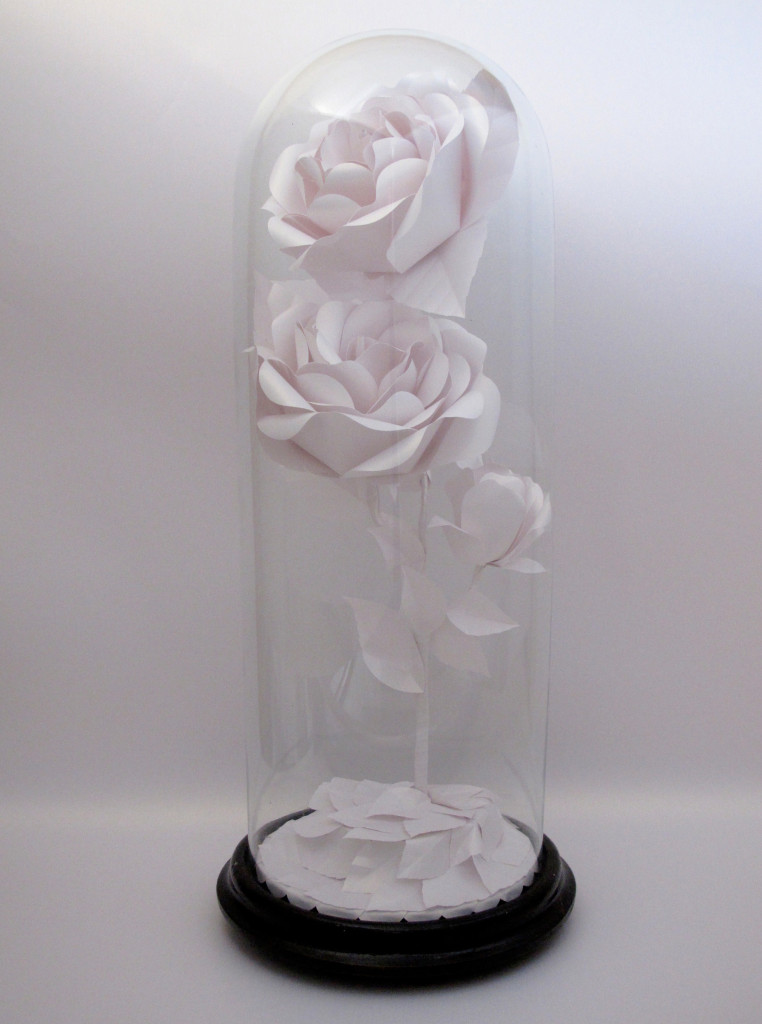 Photo: Bespoke paper rose sculpture in white gold in hand blown glass dome by Zoe Bradley. Represented at London Craft Week by Crafted.
Photo: Bespoke paper rose sculpture in white gold in hand blown glass dome by Zoe Bradley. Represented at London Craft Week by Crafted.
LO: Talk us through your creative process from initial idea to final product.
ZB: It will start with a client coming to me with an idea to create a piece of sculpture. It usually is to add a focal point to a luxury product launch or it can be as diverse as creating an art piece for a hotel foyer, or a series of windows for a store or a shopping mall.
When I start collecting ideas, they come from everywhere; it can be a print I see on a vintage seed packet, a piece of theatre, a type of music that I’m listening to…These all filter down into one mood.
I try to visit to get a feeling for the silhouette of the installation and sketch out ideas that will work in the space. I work with my team on storyboarding visuals, colour palettes, silhouettes and textures of papers. The initial process can start quite organically, but quickly it becomes more mathematical with scale plans interpreting window sizes from architectural drawings.
Then my team and I look at the process of creating the paper textile to form the right silhouette. For example, if it is flowers we then go into a sample stage where shapes are created that can have multiple layers and components that are all created by hand, scored, molded, and glued in many processes. By the time it comes to installation it can feel like we have literally grown the flowers from seeds!
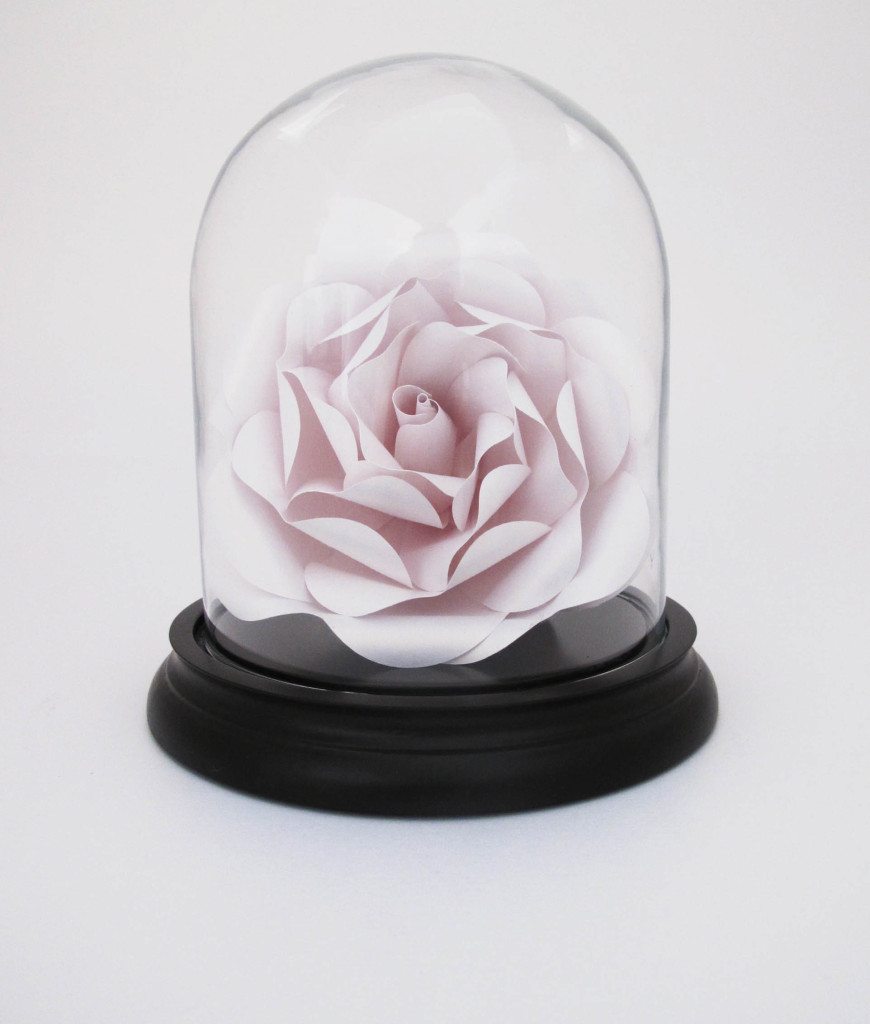 Photo: Paper rose in small glass dome in white gold, also available in pink, lilac and red by Zoe Bradley. Represented at London Craft Week by Crafted.
Photo: Paper rose in small glass dome in white gold, also available in pink, lilac and red by Zoe Bradley. Represented at London Craft Week by Crafted.
LO: What is your best advice for new makers who wish to become involved in London’s community of handmade entrepreneurs?
ZB: Get some experience; take an apprenticeship with a designer or artist you admire! It’s my best advice. I learnt a great deal from my time at Alexander McQueen.
LO: Little Observationist is all about appreciating the little things in life. Share three little things that made you happy recently.
ZB: My two young children’s smiles, Bluebell – our beautiful whippet – running on the beach, and the sight of our enormous pink cherry blossom tree. It is all I can see from my bedroom window.
CARREDUCKER
Shoe making
(Deborah Carré and James Ducker)
www.carreducker.com
LO: Tell us a bit about yourself and your background, some of your hobbies and interests that fill your spare time.
JD: I’m from Oxfordshire and live in Clapton via Barcelona and Manchester. My passion is shoemaking and general shoenerdery. Spare time is something I aspire to. I love cycling and London.
DC: I’m from Sark in the Channel Islands and live in Petersham, near Richmond. I’m lucky, my craft is a passion; but other hobbies? Skip-browsing, junk shops and car boot fairs; up-cycling furniture; rowing (I rowed the Great River Race last year); cycling; museums and art galleries; and hanging out with my family.
LO: During London Craft week, you’ll be giving a demonstration at Gieves & Hawkes. What can we expect if we visit?
J&D: An entirely absorbing experience, completely in contrast to the traffic and crowds around you. Put your favourite track on your iphone, pop in your headphones and enjoy a little ‘slow’ theatre. As a practitioner, it is a craft of patience, repetition, skill and concentration. Historically, shoemakers were either revolutionaries and philosophers (or drunks) – see, lots of thinking time!
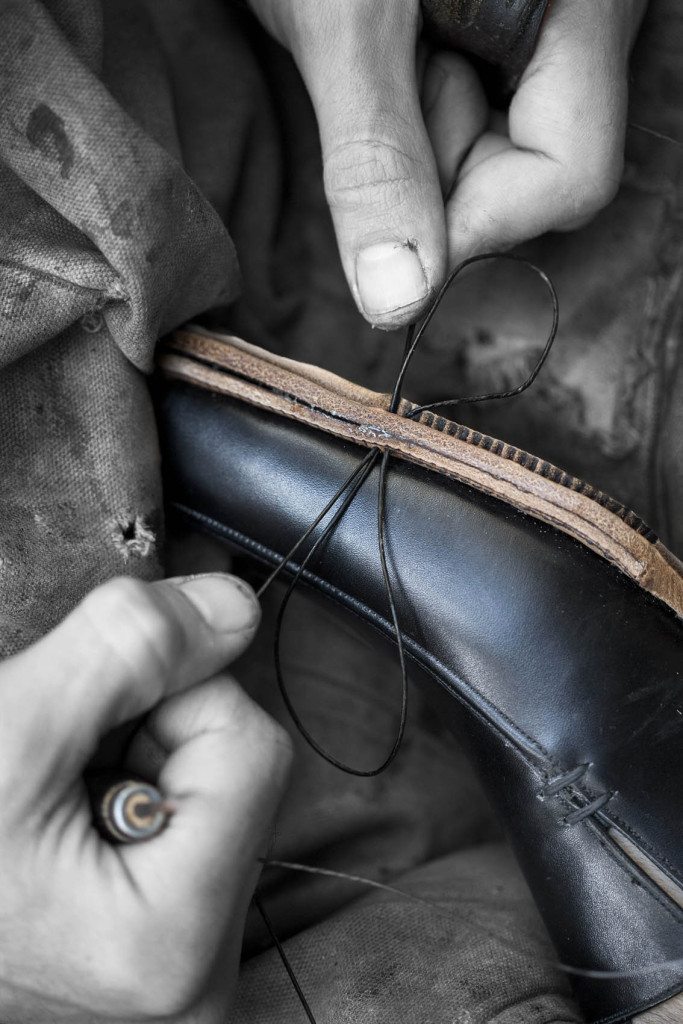 Photo: Stitching the soles using only an awl, waxed hemp thread and bristles
Photo: Stitching the soles using only an awl, waxed hemp thread and bristles
LO: Talk us through your creative process from initial idea to final product and give us some insight into the environment in which you prefer to work.
J&D: Ideas can come from any direction. We keep a record usually as photos in an image library, make sketches, keep material and leather swatches, collect magazine cuttings and storyboard for specific projects.
For bespoke work, we always start with the client and who they are. We need to understand them to design for them and need to know what they do, what their style is, where they want to wear their shoes, how often they will wear them, etc.
We take their feet measurements and they choose a heel height and toe shape so that their bespoke lasts can be made. The last is one of the most vital elements influencing the final look of their shoes, so it is important that we guide them in choosing a toe shape that will work with their feet. Too narrow a toe on a wide foot can look oddly proportioned, for instance. From there, we sketch a selection of designs for the client to choose from along with leather and detail suggestions. Once the design is chosen, we then draw the design onto their last to ensure good style lines and proportions.
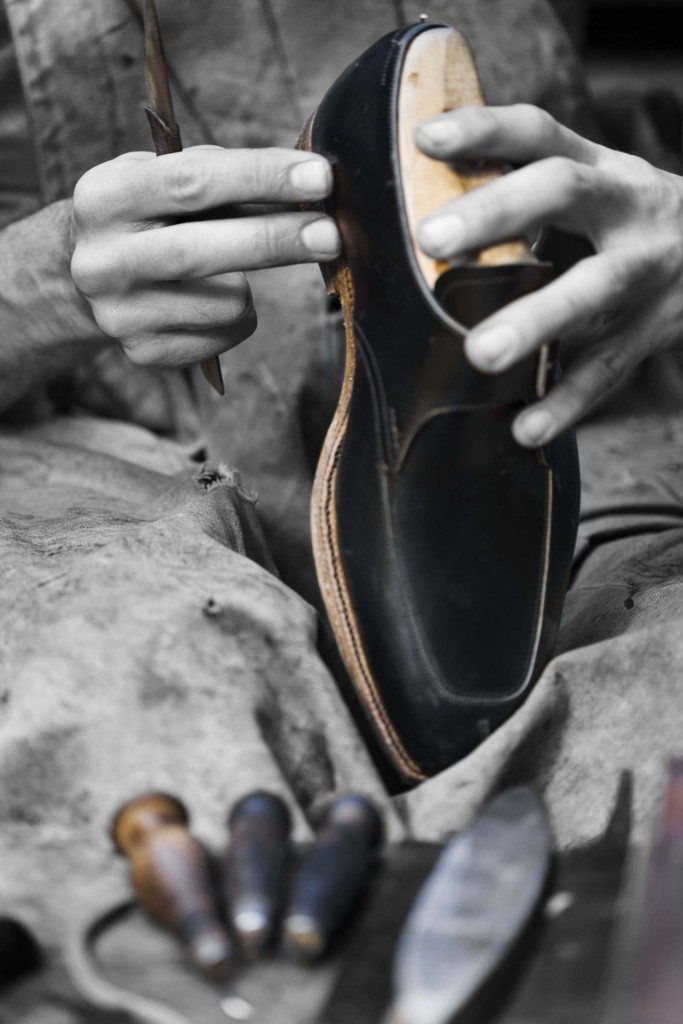 Photo: Building the heel using only paste, nails, a hammer and layers of pit-tanned oak bark leather
Photo: Building the heel using only paste, nails, a hammer and layers of pit-tanned oak bark leather
LO: Talk a bit about craftsmanship and why it is still so important today in our world of mass production. How can we continue to grow this community of makers?
D&J: Craftsmanship is a modern concept. Pre the Arts & Craft movement, people made things and carried out trades because their goods were needed. Cordwainers fall into that category…shoes were functional, crafted and in the best maker’s hands, beautiful. The idea of a craftsman did not exist, but gradually it became entangled with the idea that the act of creating and making was an end in itself.
Inundated with information in our technologically driven world, we struggle to cope, swept along in a world where face-to-face contact is diminished. Crafting and making things is intrinsic to us as human beings. Leather work is the second oldest ‘craft’.
A thriving community of makers needs a thriving customer base, new blood coming into the trade/craft and new markets being opened up to its work. The internet is a vital tool to helping to raise awareness and to educating and attracting new customers…customers who are curious about what they are buying, where it comes from and how it is made.
LO: Little Observationist is all about appreciating the little things in life. Share three little things that made you happy recently.
DC: Tree blossoms; coffee with friends in the garden; a thoughtful gift from a shoemaker in Old Salem, USA.
JD: Ducklings on the canal; solving a design conundrum; the smell of Spring in the park.
SARAH MYERSCOUGH
Gallery owner, various mediums
http://sarahmyerscough.com/
LO: Tell us a bit about yourself, your background and the Sarah Myerscough Gallery.
SM: I live in London, where I studied Art History at BA and MA level. After graduating, I went straight into working as an art consultant and advisor on collecting contemporary art to corporate collectors. I decided to work freelance twenty years ago, working for one client – DLA Piper, which soon turned into many corporates wanting to invest in contemporary art when the market was buoyant!
My ambition had always been to run my own contemporary gallery and be much more involved in working with artists and promoting their careers. The dialogue with artists was the most rewarding aspect of working in the art world. A gallery was the perfect move forward.
I had started a graduate award scheme in 1996 for DLA Piper and travelled throughout the UK to degree shows to discover new talents – exciting times. Unfortunately, due to the cuts in education in the creative courses, many students are now discouraged from becoming artists due to financial boundaries. At the time, it was wonderful to be able to support graduates and see their work develop. The opportunity to finance my own space and have the freedom to develop a gallery ethos was an ambitious step forward and one that I relished.
As it became increasingly difficult to identify with developments in contemporary fine art, my interest in craft increased, driven by the dialogue between disciplines. I have always supported and admired the tactility of medium, from glass to wood, interest in surface and form, directness of the maker’s hand to the making of the object as well as its conceptual vigour. Fifteen years later, the gallery has evolved into a multidisciplinary space and works with major international artists, makers and designers. We exhibit at major fairs all over the world and continue to focus on fairs that relate to our new changing ethos. Most recently, we were accepted for Design Miami Basel which was such a thrill.
The gallery has to step up to the mark in its search for new talents and ambition within our future creative projects. It feels like a real community of creative people, the interaction and collaborative projects that we are working on now feels really exciting, as in the beginning. Wherever possible, we work with young artists and designers to bring in fresh new creative ideas and dialogues and see ourselves as ever evolving.
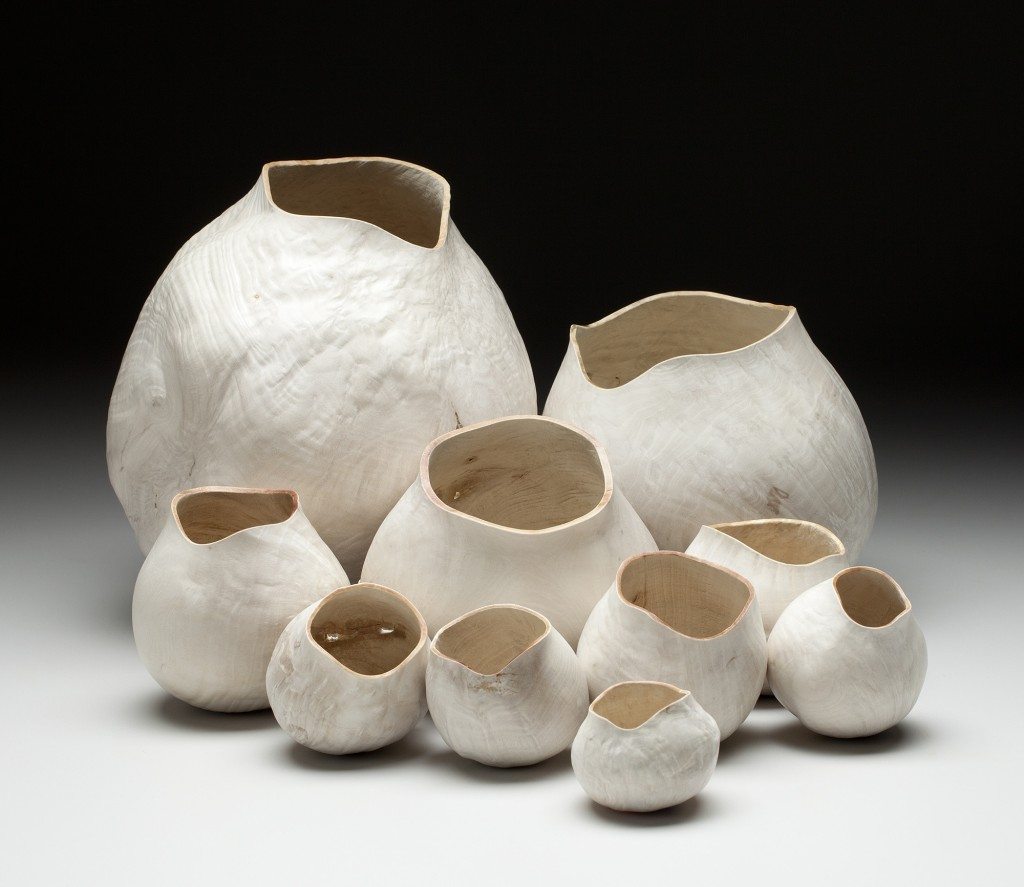 Photo: Christian Burchard, A Gathering 2 2013, Bleached Madrone root, 26 x 43 x 46 cm, 10 parts. Represented at COLLECT by Sarah Myerscough Gallery
Photo: Christian Burchard, A Gathering 2 2013, Bleached Madrone root, 26 x 43 x 46 cm, 10 parts. Represented at COLLECT by Sarah Myerscough Gallery
LO: You’ll be involved in COLLECT, the international art fair for contemporary objects at the Saatchi Gallery during London Craft Week. What can we expect if we visit?
SM: COLLECT is a great fair as it encapsulates everything that we, as a gallery, believe in and presents craft in a fine art context. We are exhibiting the best international wood, from the pure sculptural to vessel form. We are exhibiting artists that have never shown in England before and pushing their craft forward in exciting ways that are both aesthetic and conceptual. We are extending our interest and specialisation in wood into glass and ceramic.
Shelley James has a series of new glass works, Micheal Peterson has sent over three monumental wood sculptural works from Lopez Island in Washington. Malcolm Martin has produced totally new works and a real departure from his earlier practise. Nic Webb is new to the gallery and has a series of wonderful wood pieces that are burnt and sculpted rather than turned to make the vessel form. Just to name a few makers!
LO: Talk us through your process of selecting makers to work with the gallery.
SM: The process of selecting makers is usually from visiting shows, reading magazines, sometimes word of mouth or makers will contact me directly. Studio visits then allow me to see a greater variety of the maker’s works and discuss their processes. Together we talk about particular shows, then look at the context in which the elements of their practise will best suit a particular exhibition. This is an ongoing discussion and I’m invited to look at sketches and see works in progress, which is a very privileged role to play.
The curatorial aspect of this process is really where I show my creative flare, how pieces are juxtaposed to bring out the beauty of each work. I look at material and process to decide how works sit together. I think craft should be considered in this way, as one might curate a fine art exhibition as it effects how we view and engage with the work.
 Photo: Gareth Neal & Zaha Hadid, Tall Black Vessel and Oak Low Vessel. Courtesy of Gareth Neal, Zaha Hadid & Sarah Myerscough. Photo credit: Petr Krejci
Photo: Gareth Neal & Zaha Hadid, Tall Black Vessel and Oak Low Vessel. Courtesy of Gareth Neal, Zaha Hadid & Sarah Myerscough. Photo credit: Petr Krejci
LO: What are the biggest challenges for London’s community of makers? And the best rewards of being involved?
SM: The challenges are many for makers today…not only the logistical finances of studio rents, but also buying equipment. Plus, they often need larger spaces than fine artists. As well as the support of art colleges that have large kilns etc. is decreasing and the specialist skills of technicians sadly lacking. I am a great supporter of turning wood, but really there are very few art colleges and schools that have a lathe, so it is a dying art. I became a trustee of Cockpit Arts because it really offers a support network for makers and I wanted to offer my support as well.
The rewards for me when faced with all these problems, is that makers still are able to produce the most extraordinary pieces and the wealth of creativity and innovative process never ceases to amaze me. How makers/artists are able to do this, particularly when they require such technical skill and time to make each work is quite extraordinary…such is their conviction and love of what they do!

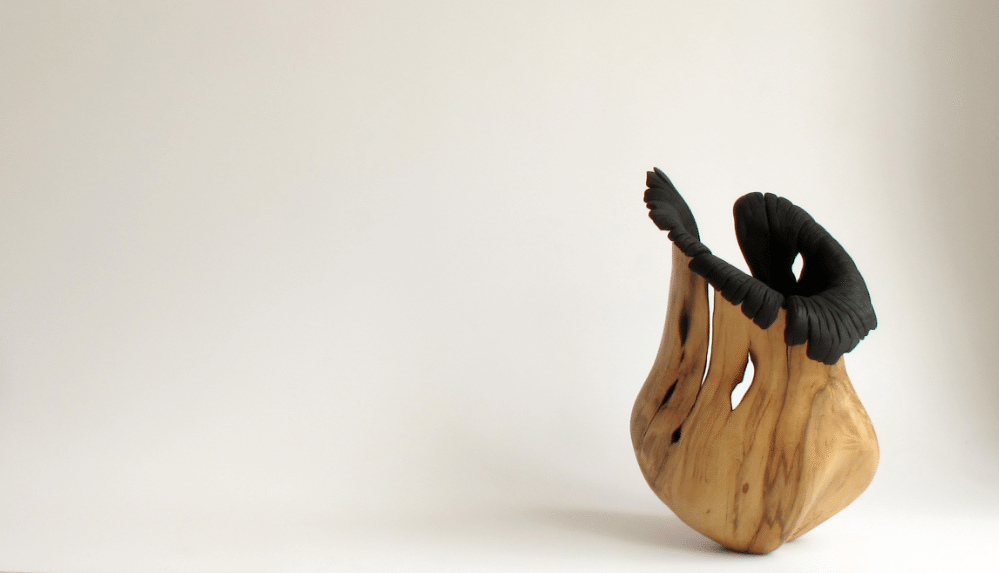
Photo: Nic Webb, Boxwood Firebowl K14, 2014. 35 cm height. Represented at COLLECT (and image credit) by Sarah Myerscough Gallery
LO: Little Observationist is all about appreciating the little things in life. Share three little things that made you happy recently.
SM: Three small things: working late with the gallery girls Thursday night for COLLECT and ordering take out burgers from “Patty and Bun”. Sharing my son’s excitement on Friday morning for his football match later that day against the “Colet crushers”. Shelley James dropping in her book to share with others at COLLECT. It’s entitled “Quadriviium”, is a particularly beautifully battered book and states on the back: “Geometry is number in space, music is number in time, and the cosmos expresses number in space and time.” – Principles that form the basis of her work, so I urge you to come and see the pieces!
London Craft Week makes its debut from May 6-10 at venues around the capital. For the schedule and more information, visit:
Website
Facebook
Twitter
Instagram
Pinterest

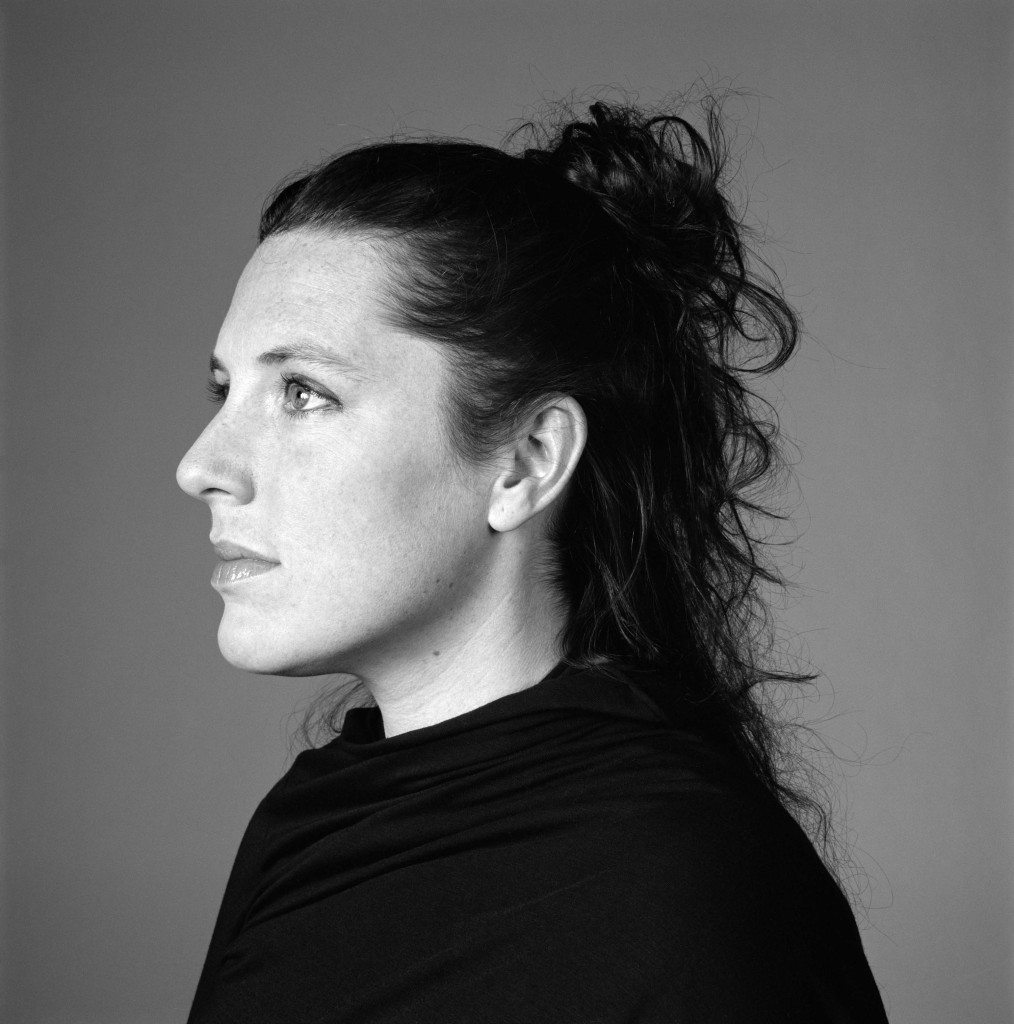
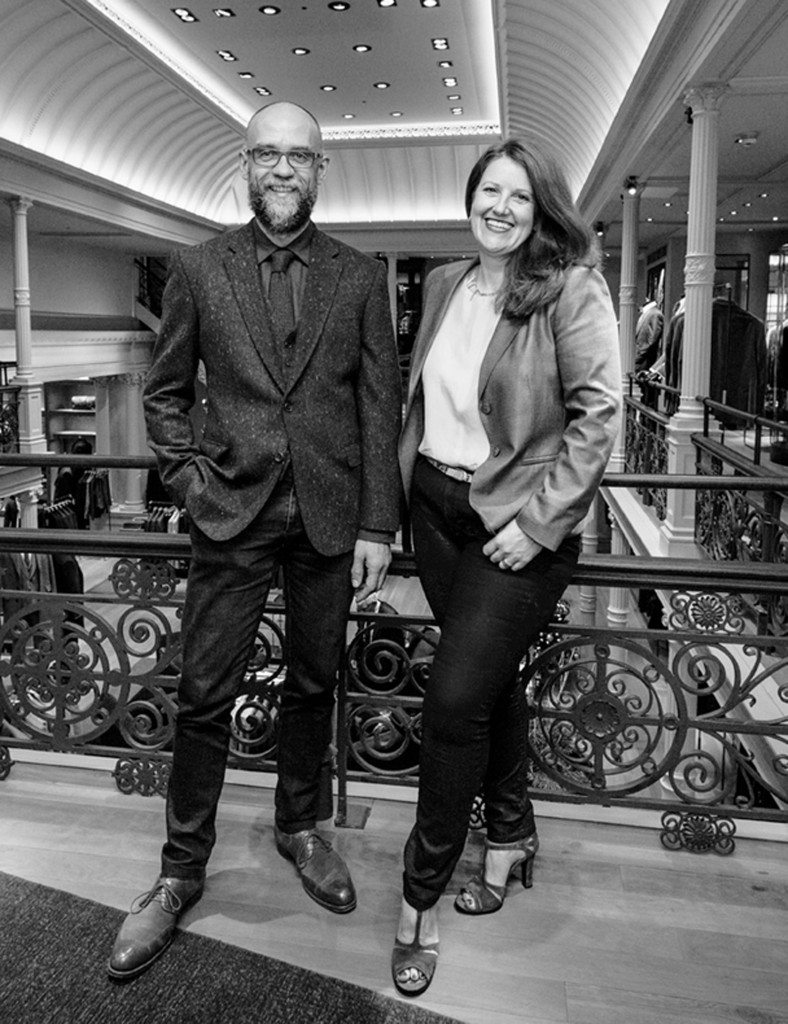
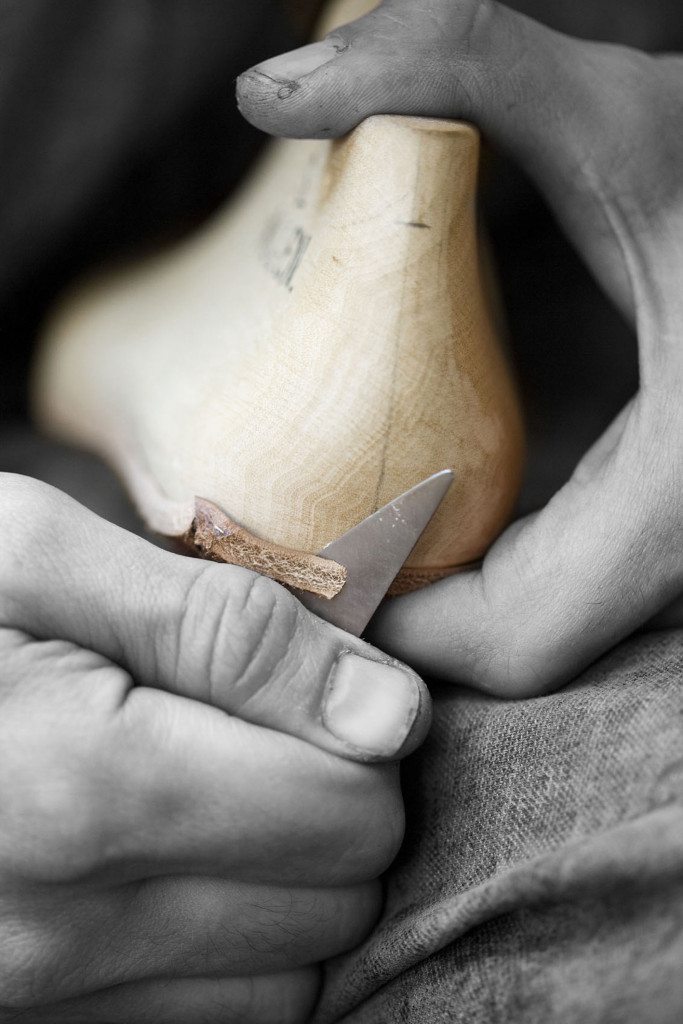
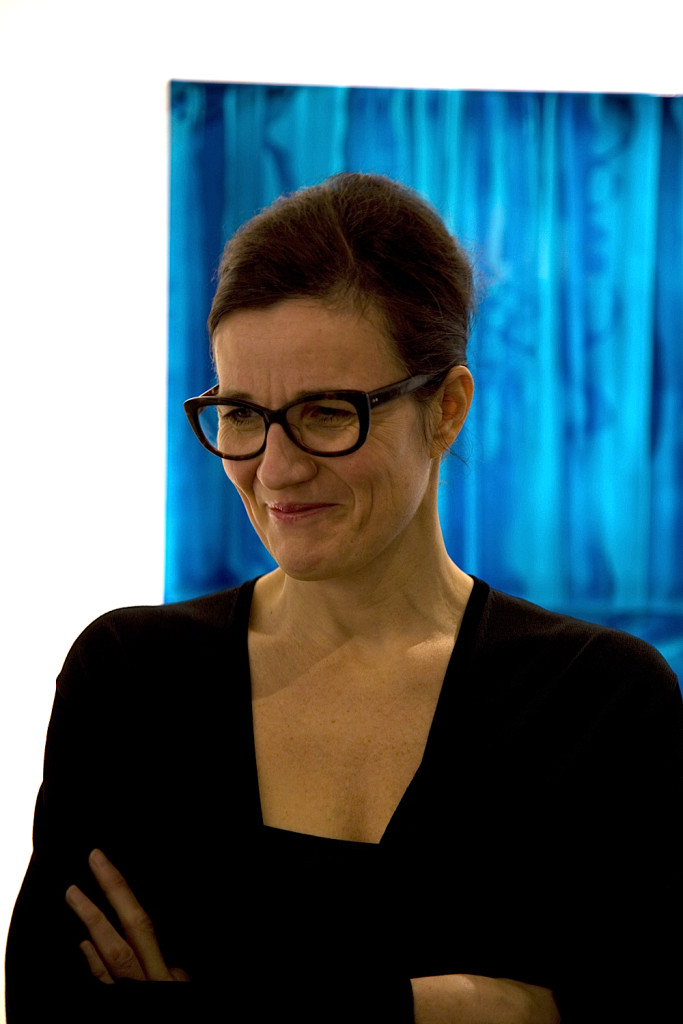
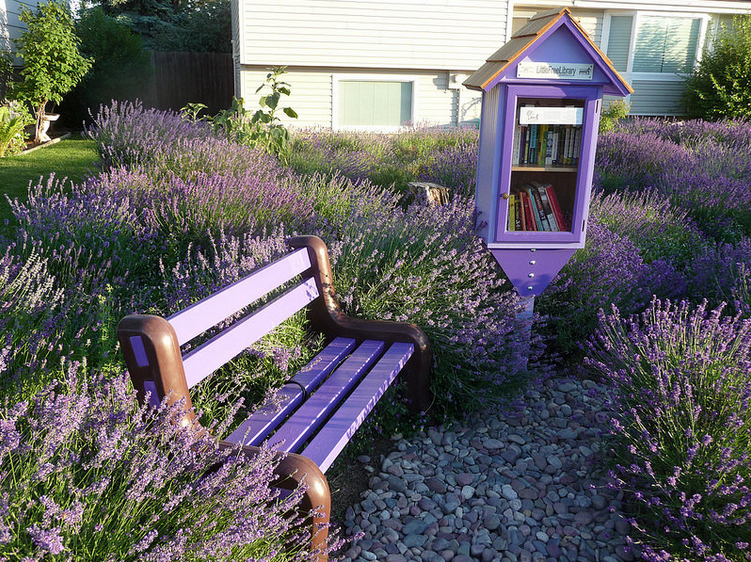


2 Comments
liquidf
May 4, 2015 at 10:42 amSo interesting! Thanks for this 🙂
Diana Mieczan
May 4, 2015 at 2:19 pmI love this post so much! Zoe’s flower sculptures are incredible and I loved reading about Sarah’s process of choosing different makers and pieces. Also, I totally agree with Deborah and James – smell of spring and coffee with friends – the best little things ever!